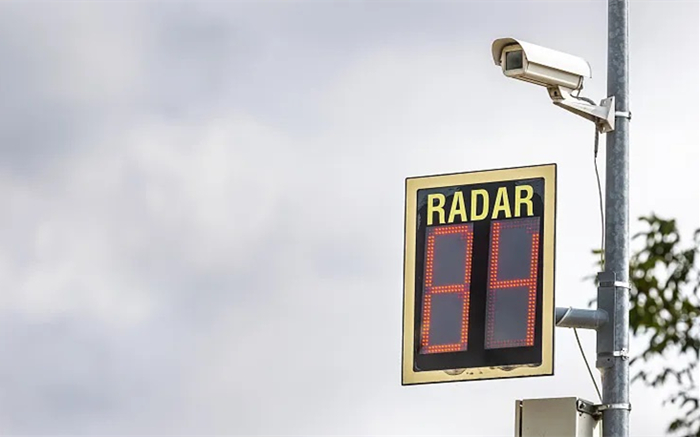Radar Sensor for Vehicle Detection: Complete Guide to Technology, Applications, and Benefits

Radar technology has revolutionized how we manage traffic, monitor roadways, and enhance vehicle safety. A radar sensor for vehicle detection is a critical component in modern transportation systems, offering reliable, accurate, and real-time data collection for both public infrastructure and private vehicle systems.
In this comprehensive guide, we will explore what radar sensors are, how they work, their types, key benefits, and various applications in traffic management, smart cities, and autonomous vehicles.
What is a Radar Sensor for Vehicle Detection?
A radar sensor for vehicle detection is an electronic device that uses radio waves to detect and monitor vehicles on or near roadways. These sensors are integral to systems such as traffic signal control, highway monitoring, parking management, and collision avoidance in vehicles.
Radar (Radio Detection and Ranging) operates by emitting electromagnetic waves and analyzing the reflected signals from objects (in this case, vehicles). This enables the radar sensor to measure:
- Distance
- Speed
- Direction
- Size and shape of moving or stationary vehicles
How Do Radar Vehicle Detection Sensors Work?
Radar vehicle detection systems function on the Doppler effect and time-of-flight principles. Here’s a step-by-step breakdown:
- Signal Emission: The radar unit emits high-frequency radio waves, typically in the 24GHz or 77GHz band for automotive applications.
- Reflection: When these waves encounter a vehicle, they bounce back toward the sensor.
- Signal Analysis: The radar system calculates changes in the frequency and timing of the returned signal to determine the vehicle’s:
- Speed (via Doppler shift)
- Distance (via time delay)
- Direction of movement
- Data Output: These measurements are sent to a control system (e.g., traffic controller, ECU in a car) for real-time decision-making.
Types of Radar Sensors for Vehicles
There are several radar technologies used for vehicle detection, each with specific applications:
1. Short-Range Radar (SRR)
- Range: Up to 30 meters
- Frequency: 24GHz
- Use Case: Blind spot monitoring, parking assistance
2. Mid-Range Radar (MRR)
- Range: 30 to 80 meters
- Frequency: 24GHz or 77GHz
- Use Case: Cross-traffic alert, lane change assist
3. Long-Range Radar (LRR)
- Range: Up to 250 meters
- Frequency: 77GHz
- Use Case: Adaptive cruise control, highway monitoring
4. Doppler Radar Sensors
- Specialized in detecting motion and speed
- Often used in speed enforcement and traffic flow systems
5. Multi-Mode Radar Sensors
- Combine short, mid, and long-range capabilities
- Ideal for autonomous driving and intelligent transportation systems (ITS)
Key Benefits of Radar-Based Vehicle Detection
Radar vehicle detection offers several advantages over traditional detection technologies:
1. All-Weather Performance
Radar sensors work effectively in rain, fog, snow, and dust, unlike cameras or infrared sensors.
2. High Accuracy
Radar provides precise speed and distance measurements, essential for safety-critical applications.
3. Long Detection Range
Especially with 77GHz long-range radars, vehicles can be detected hundreds of meters away.
4. Real-Time Processing
Radar delivers instant data, enabling quick reaction times for safety systems.
5. Low Maintenance
Radar sensors are durable, with minimal need for cleaning or recalibration.
Applications of Radar Sensors in Traffic and Transportation
Radar vehicle detection is transforming how we manage urban mobility and highway safety. Here are key application areas:
1. Smart Traffic Light Control
Radar enables dynamic signal timing based on real-time traffic flow, reducing congestion and emissions.
2. Highway Monitoring
Used in toll booths, variable speed signs, and traffic flow analysis systems.
3. Parking Management Systems
Detects vehicle presence in parking lots, garages, and on-street parking.
4. Collision Avoidance Systems
Integrated in ADAS (Advanced Driver Assistance Systems) for automatic braking and alert systems.
5. Speed Enforcement
Radar guns and fixed systems measure vehicle speed for law enforcement.
6. Autonomous Vehicles
Radar complements lidar and vision systems in self-driving cars for obstacle detection and path planning.
Radar vs. Other Vehicle Detection Technologies
| Technology | Weather Resilience | Accuracy | Cost | Maintenance | Range |
|---|---|---|---|---|---|
| Radar | Excellent | High | Medium | Low | Long to Short |
| Camera | Poor in low visibility | Medium | Low | High | Medium |
| Infrared | Poor in fog/rain | Medium | Low | Medium | Short |
| Inductive Loops | Excellent | High | Medium | High (installation) | Point-based |
Radar stands out for its all-weather reliability, non-invasive installation, and scalability.
Future Trends in Radar Vehicle Detection Technology
Radar technology is rapidly evolving, with exciting trends on the horizon:
1. AI-Powered Radar Sensing
Machine learning algorithms are being used to interpret radar data more accurately in complex traffic environments.
2. 4D Imaging Radar
Provides detailed object shape, motion, and trajectory—critical for autonomous vehicle perception.
3. Sensor Fusion
Combines radar, lidar, and vision data for robust, fail-safe vehicle detection.
4. Connected Infrastructure
Radar sensors integrated with V2X (vehicle-to-everything) systems enable smarter traffic ecosystems.
Conclusion
A radar sensor for vehicle detection is a cornerstone of modern traffic management and vehicle safety systems. Whether you’re managing a smart city, developing autonomous vehicles, or optimizing parking solutions, radar technology offers unmatched reliability, precision, and scalability.
By choosing the right radar sensor technology, you can enhance road safety, reduce congestion, and support the future of intelligent transportation.
Looking for expert advice or a custom radar solution? Contact us today!
